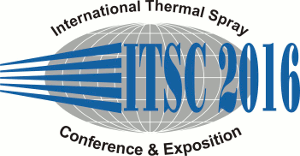
|
4621 |
|
Influence of multiple guide vane geometry on characteristics of TBCs deposited by PS-PVD method |
|
Jie Mao* / Guangzhou Research Institute of Non-ferrous Metals, China Liu Min/ Institute of New Materials, Guangzhou Research Institute of Non-ferrous Metals, P.R.China Changguang Deng/ Institute of New Materials, Guangzhou Research Institute of Non-ferrous Metals, P.R.China Chunmin Deng/ Institute of New Materials, Guangzhou Research Institute of Non-ferrous Metals, P.R.China Ziqian Deng/ Institute of New Materials, Guangzhou Research Institute of Non-ferrous Metals, P.R.China Kesong Zhou/ Institute of New Materials, Guangzhou Research Institute of Non-ferrous Metals, P.R.China |
|
The influence of the multiple guide vane geometry on the thickness and microstructure of thermal barrier coatings was presented in this article. The assessment of model vane made of DZ40M alloy used in the first stage of turbine engines was performed. The multicomponent NiCoCrAlTaY coating as bond coat as well as the zirconia stabilized by yttrium oxide coating as top ceramic coat was deposited on the vane surface by PS-PVD process. The thickness measurement and microstructure observation was performed with a use of optical and scanning microscopy. It has been proven that the entire surface of double vane was covered by NiCoCrAlTaY and YSZ coatings. The thickest coating was found close to the leading edge and trailing edge of the vane. In those places the coating was approximate 80-100% thicker than in the other areas on double vane. The obtained results indicate that it is possible to manufacture the thermal barrier coatings including metallic bond coat and top ceramic coat by single PS-PVD process on the first stage turbine blades of the aircraft engine. It indicates the possibility of application of this new method for TBCs production in the industrial practice. Keywords Multiple guide vane; Thermal barrier coatings; PS-PVD; Thickness distribution; Microstructure |